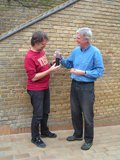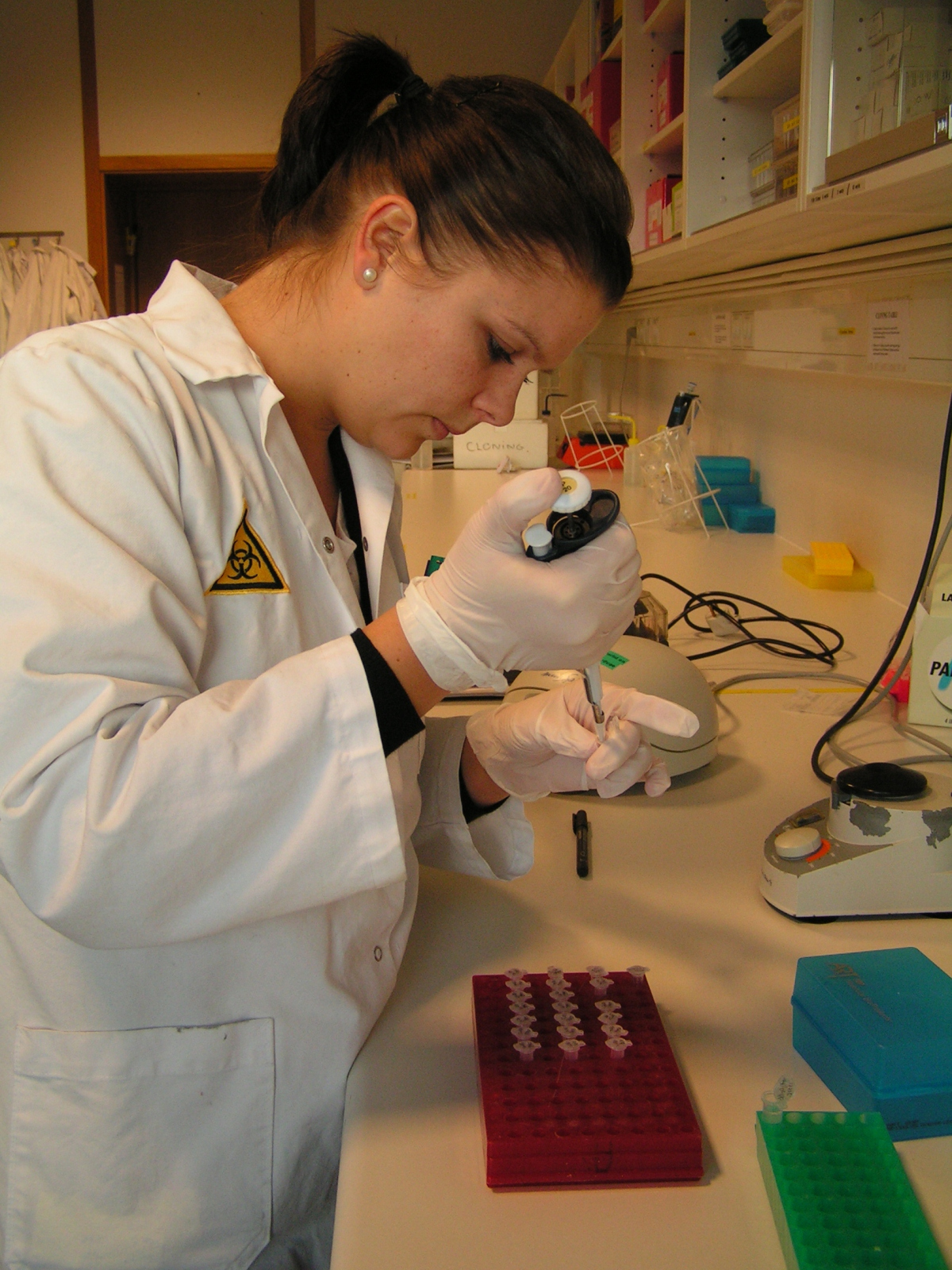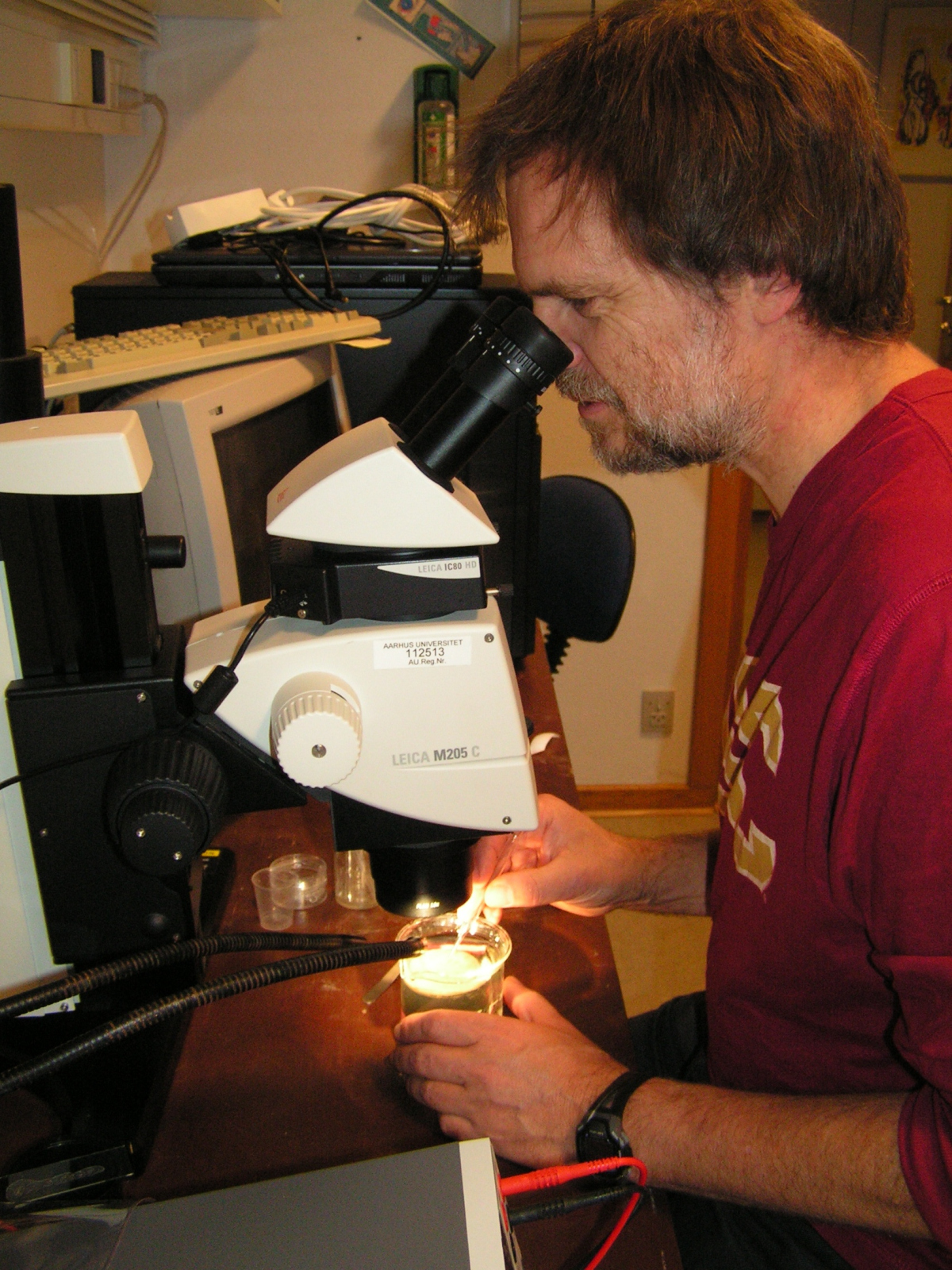Page path:
- Press Office
- Press releases 2011
- 01.12.2011 New Centre of Excellence in Aarhus t...
01.12.2011 New Centre of Excellence in Aarhus to explore the deep biosphere
Prof. Dr. Bo Barker Jørgensen, director at the Max Planck Institute for Marine Microbiology until September 2011, is granted a new Center for Geomicrobiology at Aarhus University, worth 59 million DKK (about 8 million €). He founded the existing Center in 2007, which is jointly financed by the Max Planck Society and the Danish National Research Foundation. From October 1, 2012 research in the new center will be financed by the Danish National Research Foundation for another five years. Additionally to the founding for the new center, Prof. Bo Barker Jørgensen is also awarded an advanced grant of the European Research Council equivalent to 2.5 million € for the project MICROENERGY. „In the new Center for Geomicrobiology we seek to continue the good cooperation with the Max Planck Institute for Marine Microbioloy in Bremen and other international research partners “, says Bo Barker Jørgensen.
The deep biosphere
The scientists of the Center for Geomicrobiology study the microorganisms that live deep down in the ocean’s sediment and even in the underlying oceanic crust. This environment has been buried thousands or millions of years ago and extends underneath the entire sea bed. Although research on this special environment, known as the deep biosphere, is still a young science, data from the deep suggest that scientists encounter here the largest microbial community of our planet.
Besides the study of the microorganisms and their environment the research of the Center for Geomicrobiology targets the development of techniques and tools for the investigation of the deep biosphere. The center’s ambitious goal is to be able to work with the individual cells of bacteria and archaea and analyse their genetic diversity and metabolism without first having to cultivate them in the laboratory. The particular interest of the researchers lies in the identity and activity of the microorganisms from the deep biosphere. Since no light ever reaches this environment and nutrients are scarce the extremely low energy supply to these organisms remains an enigma. As in the existing center, the scientists will use a diversity of approaches to answer these questions. Biologists, chemists and physicists collaborate to gain insights that could change our perception of the limits to microbial energy metabolism and its biogeochemical control.
Bioelectricity
Another advanced grant of the European Research Council, worth ca. 2.2 million € for the project COULOMBUS, was awarded to a Danish colleague. Dr. Lars Peter Nielsen, a researcher of the Center for Geomicrobiology who was awarded the grant, studies bioelectricity in marine sediments. The project was motivated by the exciting discovery of extracellular electron transfer in biogeochemical processes. The electron transfer between microorganisms and their mineral environments can connect energy-yielding redox processes over several centimetres in the seabed and account for a major part of the oxygen consumption. With the new funding, Lars Peter Nielsen and his colleagues will study the biophysics, microbiology and biogeochemistry of extracellular electron transfer.
Website of the Center
For further information please contact:
Department of Bioscience-Center for Geomicrobiology
Aarhus University
Ny Munkegade 116
8000 Aarhus C
Denmark
Head of Center
Bo Barker Jørgensen +45 8942 3314 [Bitte aktivieren Sie Javascript]
Administration
Camilla Nissen Toftdal +45 8942 3280 [Bitte aktivieren Sie Javascript]
The deep biosphere
The scientists of the Center for Geomicrobiology study the microorganisms that live deep down in the ocean’s sediment and even in the underlying oceanic crust. This environment has been buried thousands or millions of years ago and extends underneath the entire sea bed. Although research on this special environment, known as the deep biosphere, is still a young science, data from the deep suggest that scientists encounter here the largest microbial community of our planet.
Besides the study of the microorganisms and their environment the research of the Center for Geomicrobiology targets the development of techniques and tools for the investigation of the deep biosphere. The center’s ambitious goal is to be able to work with the individual cells of bacteria and archaea and analyse their genetic diversity and metabolism without first having to cultivate them in the laboratory. The particular interest of the researchers lies in the identity and activity of the microorganisms from the deep biosphere. Since no light ever reaches this environment and nutrients are scarce the extremely low energy supply to these organisms remains an enigma. As in the existing center, the scientists will use a diversity of approaches to answer these questions. Biologists, chemists and physicists collaborate to gain insights that could change our perception of the limits to microbial energy metabolism and its biogeochemical control.
Bioelectricity
Another advanced grant of the European Research Council, worth ca. 2.2 million € for the project COULOMBUS, was awarded to a Danish colleague. Dr. Lars Peter Nielsen, a researcher of the Center for Geomicrobiology who was awarded the grant, studies bioelectricity in marine sediments. The project was motivated by the exciting discovery of extracellular electron transfer in biogeochemical processes. The electron transfer between microorganisms and their mineral environments can connect energy-yielding redox processes over several centimetres in the seabed and account for a major part of the oxygen consumption. With the new funding, Lars Peter Nielsen and his colleagues will study the biophysics, microbiology and biogeochemistry of extracellular electron transfer.
Website of the Center
For further information please contact:
Department of Bioscience-Center for Geomicrobiology
Aarhus University
Ny Munkegade 116
8000 Aarhus C
Denmark
Head of Center
Bo Barker Jørgensen +45 8942 3314 [Bitte aktivieren Sie Javascript]
Administration
Camilla Nissen Toftdal +45 8942 3280 [Bitte aktivieren Sie Javascript]




